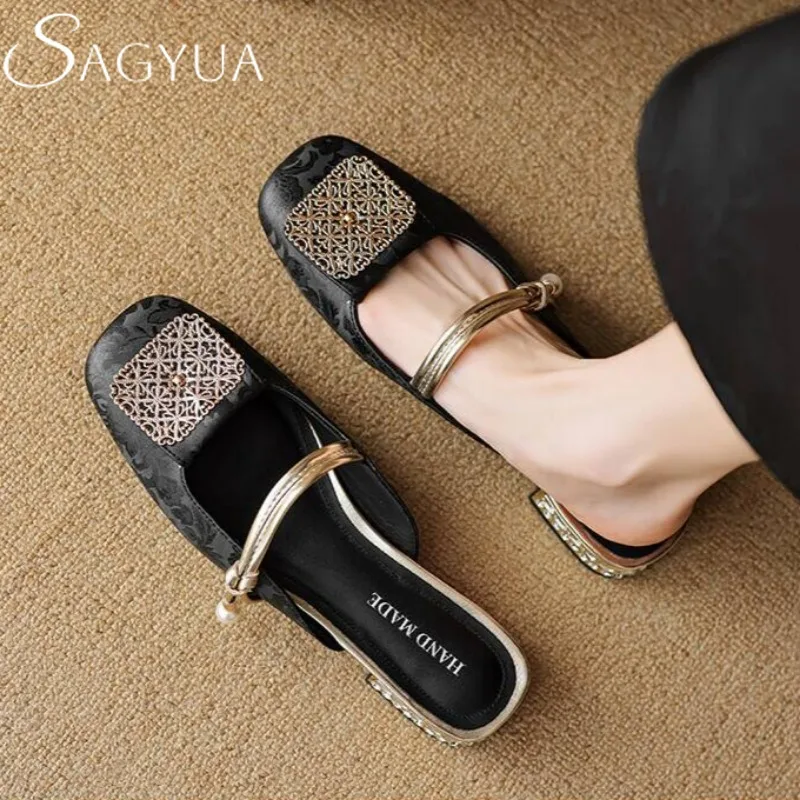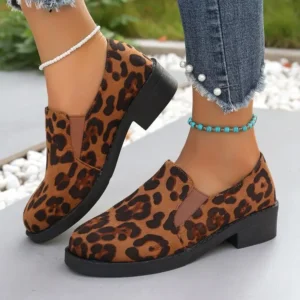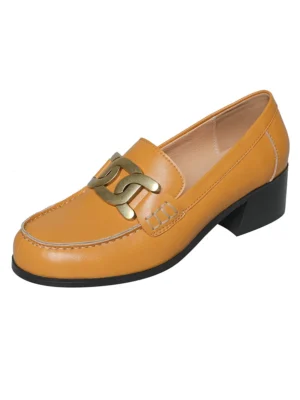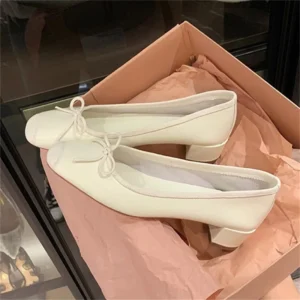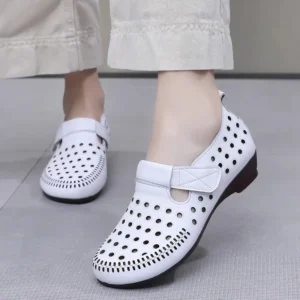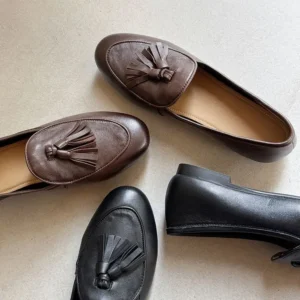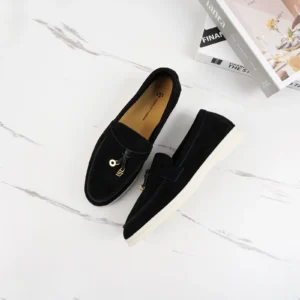Understanding Shoe Heel Types and Their Impact on Comfort
When shopping for shoes, the heel height is one of the most important factors that affects both style and comfort. But what exactly defines different heel heights, and how do they impact your feet?
Flat shoes typically feature heel heights ranging from 0 to 1 inch (0-2.5 cm). These include many classic loafers, ballet flats, and casual shoes that keep your foot in a nearly level position. Meanwhile, low-heeled shoes have a modest elevation of 1 to 2 inches (2.5-5 cm), offering a slight lift without the dramatic angle of higher heels.
Understanding the difference between these heel heights isn’t just about fashion—it’s crucial for your foot health and everyday comfort. Your choice affects:
- How weight distributes across your foot
- Your overall posture and alignment
- Potential stress on different parts of your feet
- Comfort levels during extended wear
The relationship between professional office loafer outfits and proper heel height selection is important for maintaining comfort throughout your workday. Finding the right balance between style and comfort often starts with understanding which heel height works best for your specific needs.
Many people find excellent options in flat classic loafers when prioritizing everyday comfort, though individual preferences and foot anatomy play significant roles in determining the ideal fit.
Key Elements of Foot Comfort: Beyond Heel Height
While heel height significantly influences shoe comfort, several other crucial elements determine how a shoe feels on your foot:
- Arch support – Proper support maintains your foot’s natural curve and prevents overpronation (excessive inward rolling)
- Cushioning – Quality padding absorbs impact when walking, protecting joints from shock
- Weight distribution – How pressure spreads across your foot affects comfort, especially during long periods of standing or walking
- Stability – A stable base prevents wobbling and provides security with each step
- Toe box space – Adequate room prevents pinching and allows natural toe spread
- Foot mechanics – How well the shoe accommodates your natural walking pattern impacts overall comfort
These factors apply to both flat and low-heeled shoes, though their implementation may differ between styles. For instance, a flat shoe with excellent arch support might feel more comfortable than a low heel with minimal support, despite the conventional wisdom about heel heights.
The definitive guide to footwear design comfort explores these elements in greater depth, showing how they interact with different heel heights to create truly comfortable shoes. Understanding these fundamentals helps you look beyond marketing claims to find genuinely comfortable options.
Flat Shoes: Comfort Benefits and Advantages
Flat shoes offer several distinct comfort advantages that make them popular choices for everyday wear:
- Natural foot positioning – Flat shoes maintain a position similar to walking barefoot, allowing your feet to function more naturally
- Enhanced stability – The full-foot contact with the ground provides better balance and reduces the risk of ankle rolls or falls
- Even weight distribution – Well-designed flat shoes spread your body weight across your entire foot rather than concentrating it in specific areas
- Improved posture alignment – Many flat styles promote a more natural standing posture without forcing your body to compensate for an elevated heel
- Reduced toe compression – Properly designed flat shoes give toes room to spread naturally without being pushed forward
These benefits are particularly noticeable in quality comfortable flat loafers that prioritize support along with their minimal heel height. People with certain foot types particularly benefit from flat shoes, including those with:
- Already tight calf muscles or Achilles tendons
- Balance issues or stability concerns
- Conditions that make higher heels uncomfortable or dangerous
Flat shoes complement natural foot mechanics when designed thoughtfully. The key is finding pairs that offer appropriate support rather than simply being flat with no cushioning or structure.
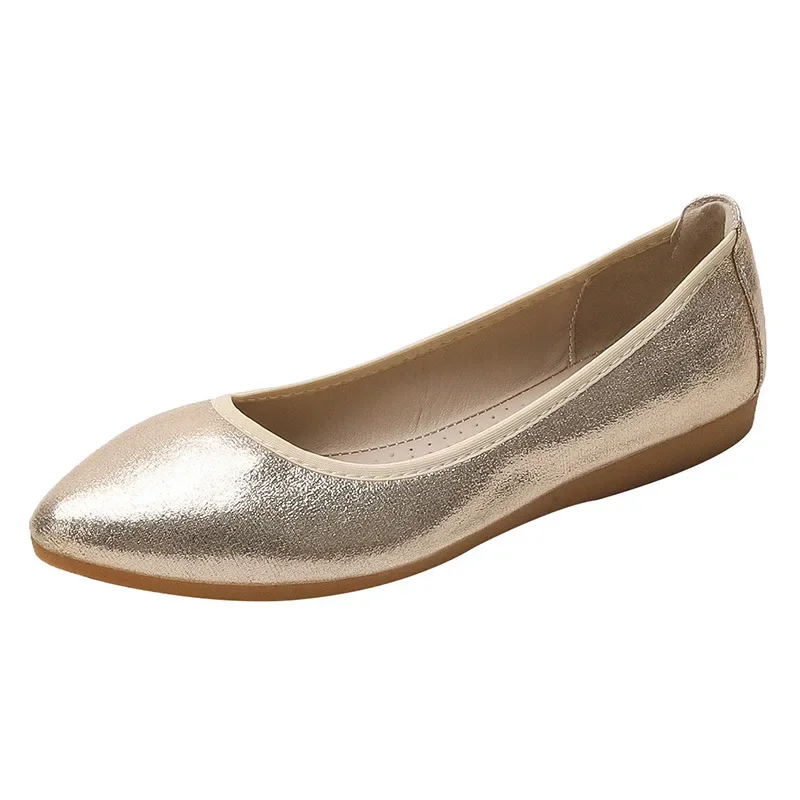
Flat Shoes: Comfort Challenges and Health Concerns
Despite their advantages, flat shoes can present certain challenges and potential issues for foot comfort and health:
- Limited arch support – Many flat shoes lack adequate arch support, potentially leading to overpronation where the foot rolls inward excessively
- Minimal cushioning – Without proper padding, flat shoes may transfer more impact to your joints when walking on hard surfaces
- Achilles tendon strain – Consistently wearing completely flat shoes may shorten the Achilles tendon over time, creating discomfort when switching to different heel heights
- Plantar fasciitis risk – Insufficient support in flat shoes can contribute to plantar fasciitis, causing heel pain and inflammation
- Joint stress – Without shock absorption, flat shoes may increase stress on ankle, knee and hip joints
The distinction between supportive flat shoes and completely flat, unsupportive styles is crucial. Quality matters significantly, as demonstrated in advice on how to wear loafers to the office comfortably for extended periods.
People with certain foot conditions may find flat shoes particularly challenging:
* High arches that need more support
* Plantar fasciitis or heel pain issues
* Achilles tendonitis or tightness
Common symptoms of wearing poorly designed flat shoes include arch fatigue, heel pain that’s worst in the morning, and general foot tiredness by day’s end.
Low-Heeled Shoes: Comfort Benefits and Advantages
Low-heeled shoes offer their own set of comfort advantages that make them appealing alternatives to completely flat styles:
- Achilles tendon relief – The slight elevation reduces constant stretching of the Achilles tendon, potentially decreasing strain
- Enhanced arch support – Many low-heeled designs naturally incorporate arch support as part of their construction
- Potential posture benefits – The slight elevation can help some people achieve better posture alignment, particularly those with tight posterior leg muscles
- Improved cushioning options – Low heels often include more substantial cushioning in the footbed to offset the slight angle
- Strategic weight distribution – Quality low heels distribute weight more evenly between heel and forefoot than completely flat shoes
The slight elevation in low heel loafers can provide a comfortable middle ground for many wearers. These benefits tend to be most pronounced for people with:
- Naturally tight calf muscles or shortened Achilles tendons
- Slight pronation issues (inward rolling of the foot)
- Need for moderate professional elevation without high heel discomfort
The key difference is that low heels shift your body weight slightly differently than flats, which can provide relief to people who find completely flat shoes uncomfortable.
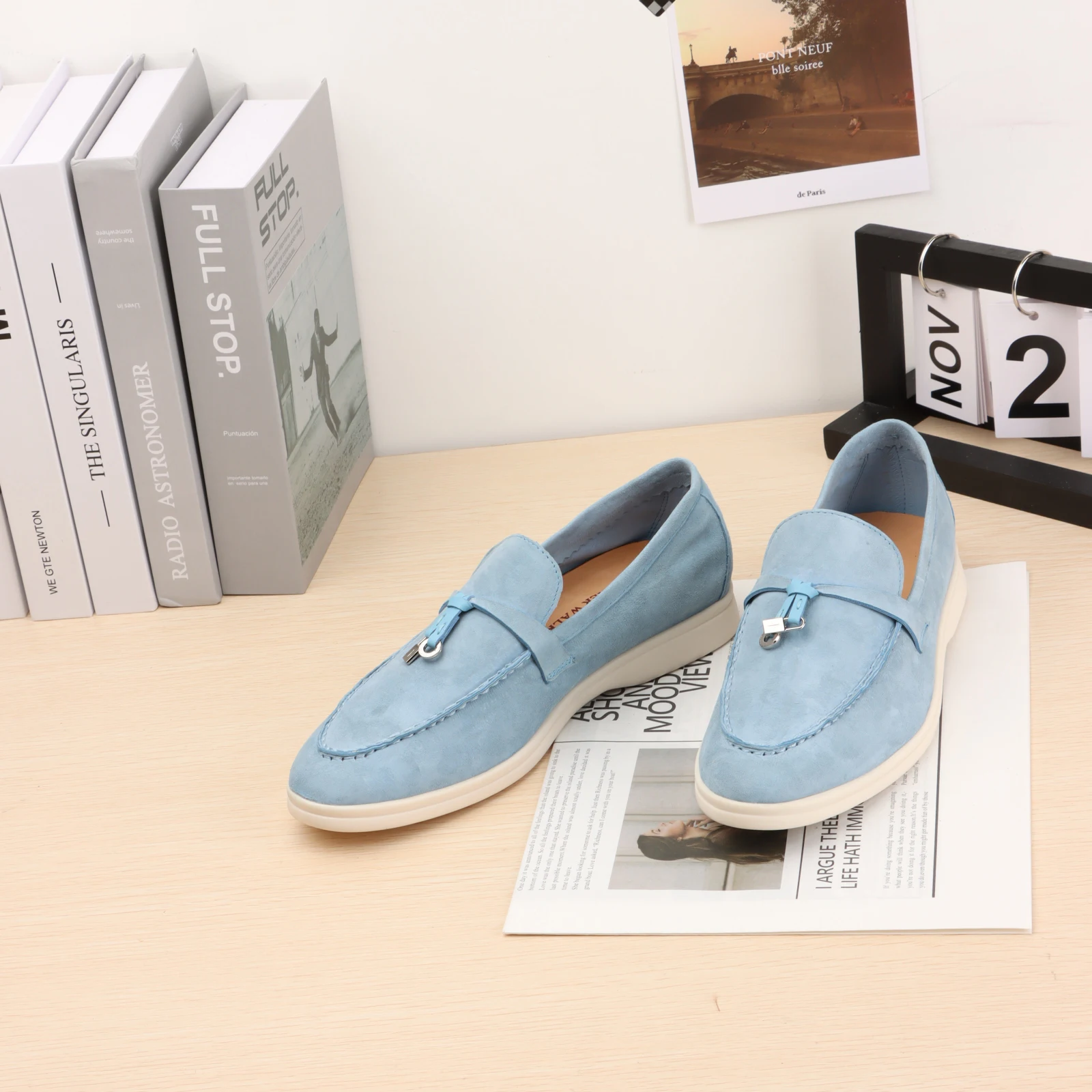
Low-Heeled Shoes: Comfort Challenges and Health Concerns
Despite their moderate height, low-heeled shoes present their own set of potential comfort challenges:
- Forward weight shift – Even modest heels push body weight slightly forward, increasing pressure on the ball of the foot
- Metatarsal stress – This forward pressure can create discomfort in the metatarsal bones if the shoe lacks proper cushioning
- Toe box constraints – Some low-heeled designs taper the toe box, creating compression issues despite the modest heel height
- Potential balance adjustments – The body must make subtle posture changes to accommodate even small heels, which can affect back comfort
Heel width significantly impacts stability and comfort in low-heeled shoes. Narrow heels concentrate weight in a smaller area, while wider heels and blocks provide more stability. Solutions for many comfortable low heel loafers address these specific issues through thoughtful design.
People with certain foot conditions may find low heels particularly challenging:
* Morton’s neuroma or existing forefoot pain
* Bunions or hammertoes that worsen with any forward pressure
* Balance issues requiring completely flat shoes
Common signs of discomfort in poorly designed low heels include ball-of-foot pain, toe cramping after extended wear, and general foot fatigue.
Direct Comparison: Comfort Features of Flat vs. Low-Heeled Shoes
| Comfort Factor | Flat Shoes | Low-Heeled Shoes |
|---|---|---|
| Arch Support | Often minimal unless specifically designed with support | Frequently built into the design with moderate support |
| Cushioning | Varies widely; often thinner to maintain low profile | Often includes more cushioning to offset the angle |
| Weight Distribution | Evenly distributed across entire foot | Slightly shifted forward to ball of foot |
| Stability | Maximum stability with full ground contact | Generally stable but slightly less than flats |
| Achilles Tendon Impact | Keeps tendon fully stretched, potential for strain | Slight elevation reduces tendon stretching |
| Posture Effect | Maintains natural alignment for some; insufficient support for others | Slight elevation may improve posture for some body types |
| Toe Box Pressure | Minimal forward pressure when properly sized | Slight forward slide may compress toes |
| Shock Absorption | Directly transfers ground impact unless well-cushioned | Can provide better shock absorption with proper design |
Both shoe types can be comfortable when well-designed, but they distribute weight differently across the foot. Flats provide a more natural stance but may lack support, while low heels offer some elevation and often built-in arch support but shift weight slightly forward.
Quality construction matters tremendously in both categories. Well-made block heel loafers often provide excellent stability while maintaining comfort through proper design principles.
Situational Comfort: Which Shoe Type Works Best When?
Different activities and scenarios may call for either flat or low-heeled options for optimal comfort:
For All-Day Office Wear:
Flats typically excel for constant desk work with minimal walking, while quality low heels (1-1.5 inches) often provide better support for roles requiring frequent standing and walking throughout an office.
For Prolonged Standing:
Well-cushioned flats with proper arch support generally outperform low heels for stationary standing positions like retail work or cooking. However, some people with high arches may find low heels distribute weight more comfortably.
For Extensive Walking:
Supportive flat shoes usually provide superior comfort for significant walking distances, though some find a very slight heel (0.5-1 inch) reduces Achilles strain during long walks.
For Formal Settings:
Low heels often strike the balance between comfort and appropriate formality for events, while dressy flats work well for occasions where more movement is expected.
Practical advice on choosing between loafers and heels for professional scenarios can help navigate these situational decisions. The key is matching your footwear not just to your outfit but to your day’s activities and your specific comfort needs.
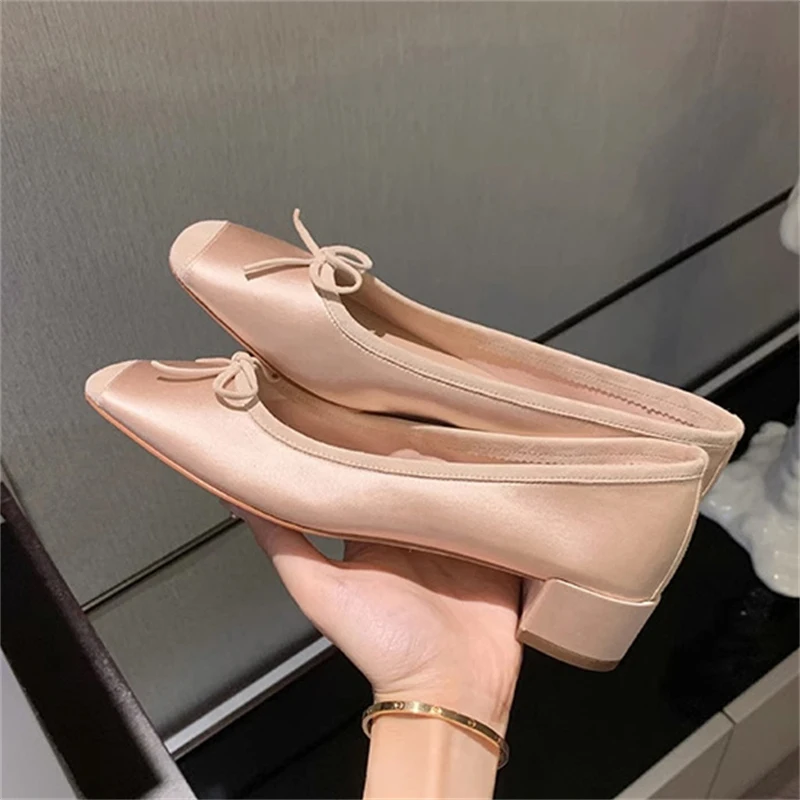
Impact on Foot Conditions and Overall Health
The choice between flat and low-heeled shoes can significantly affect existing foot conditions and overall foot health:
Plantar Fasciitis:
Low heels (1-1.5 inches) often provide relief by reducing tension on the plantar fascia, while completely flat shoes may aggravate symptoms unless they offer excellent arch support and cushioning.
Bunions and Hammertoes:
Flat shoes with wide toe boxes typically accommodate these conditions better than low heels, which can create additional pressure points and compression.
Flat Feet (Overpronation):
Supportive low heels sometimes help correct excessive foot rolling better than flats, though specially designed flat shoes with structured arch support can also work well.
High Arches:
Both styles can work for high arches, but cushioned low heels often provide better shock absorption and arch contact for this foot type.
Achilles Tendonitis:
Low heels frequently offer relief for Achilles issues by reducing stretch on the tendon, while completely flat shoes may initially exacerbate discomfort.
Knee, Hip and Back Alignment:
The impact varies by individual biomechanics—some people maintain better alignment in quality flats, while others find mild elevation improves their posture and reduces pain.
Information about how block heels affect foot health compared to flat shoes provides deeper insights into these relationships. For persistent foot pain or severe conditions, consult a podiatrist for personalized recommendations before choosing either style.
Beyond Heel Height: Critical Factors for Shoe Comfort
While the flat versus low heel debate matters, several other factors have equal or greater impact on overall comfort:
Construction Quality:
How the shoe is built—including seam placement, attachment methods, and structural integrity—directly affects how it feels during wear. Well-constructed shoes distribute pressure more evenly and maintain their shape longer.
Materials:
Breathable, flexible materials that conform to your foot shape significantly improve comfort regardless of heel height. Quality leather flat loafers often excel in this area, molding to your feet over time.
Insole Design:
Removable, cushioned insoles with proper contours can dramatically improve comfort in both flat and low-heeled styles. They allow for customization and replacement as cushioning compresses.
Proper Sizing:
Even the best-designed shoe becomes uncomfortable when incorrectly sized. Width matters as much as length, with many foot issues stemming from shoes that are too narrow.
Individual Foot Structure:
Your unique foot anatomy—including arch height, width, and pressure points—may favor one style over another regardless of general recommendations.
Break-in Period:
Quality leather shoes typically require a break-in period to conform to your feet, with gradual increases in wearing time recommended when transitioning between heel heights.
These factors often outweigh the flat versus low heel distinction in determining actual comfort during wear.
Expert Insights: Podiatric Recommendations
Podiatrists generally offer consistent recommendations about shoe features that promote foot health, regardless of whether the shoe is flat or has a low heel:
Essential Features Podiatrists Recommend:
* Adequate arch support that matches your foot’s natural contour
* Cushioning that absorbs shock without compressing too quickly
* A firm heel counter that stabilizes the rear foot and prevents excess motion
* A toe box wide enough to allow natural toe spreading and movement
* Appropriate flexibility at the ball of the foot (but not excessive bending)
* Secure fastening (laces, straps, or proper fit) to prevent foot sliding
Most foot specialists suggest that completely flat shoes with no cushioning or support are as problematic as higher heels, recommending instead a middle ground of either supportive flats or very low heels (under 1.5 inches).
For business settings where style matters, finding business casual loafer outfit ideas that incorporate podiatrist-approved shoes helps maintain both professional appearance and foot health.
Podiatrists typically discourage shoes with completely flat, uncushioned soles, extremely pointed toe boxes, or those without any structure or support—regardless of heel height.
Women's Comfortable Flat Loafers, Women's Leopard Print Loafers, Women's Low Heel Loafers
$82.50 Select options This product has multiple variants. The options may be chosen on the product pageWomen's Block Heel Loafers, Women's Heeled Penny Loafers, Women's Monk Strap Loafers
$194.04 Select options This product has multiple variants. The options may be chosen on the product pageWomen's Block Heel Loafers, Women's Square Heel Loafers, Women's Square Toe Flat Loafers
Price range: $73.61 through $86.41 Select options This product has multiple variants. The options may be chosen on the product pageWomen's Comfortable Flat Loafers, Women's Leather Flat Loafers, Women's Round Toe Flat Loafers
$124.88 Select options This product has multiple variants. The options may be chosen on the product pageWomen's Black Flat Loafers, Women's Black Penny Loafers, Women's Classic Tassel Loafers
$194.28 Select options This product has multiple variants. The options may be chosen on the product pageWomen's Loafer Mules, Women's Suede Flat Loafers
$190.23 Select options This product has multiple variants. The options may be chosen on the product page
Tips for Choosing Comfortable Shoes (Regardless of Heel Height)
Finding truly comfortable shoes involves looking beyond basic style and heel height to evaluate specific comfort features:
- Shop later in the day when feet are naturally more swollen to ensure proper fit at their largest
- Test the heel counter by pressing on the back of the shoe—it should be firm and not collapse easily
- Check torsional stability by twisting the shoe gently—it should resist twisting in the middle but flex at the ball of the foot
- Ensure adequate toe room by making sure you can wiggle your toes and have about a half-inch space beyond your longest toe
- Look for removable insoles that allow customization or replacement as cushioning compresses
- Perform the bend test to verify the shoe flexes at the ball of the foot (where your foot naturally bends) rather than in the middle
- Examine the quality of materials and seams for durability and to avoid irritation points
When transitioning between different heel heights, do so gradually to allow your muscles and tendons time to adjust. Many foot specialists recommend rotating between different shoes rather than wearing the same pair daily.
Quality leather heeled loafers often provide excellent examples of proper construction principles that enhance comfort regardless of their slight elevation.
Is One Better Than the Other? Finding Your Ideal Comfort Level
After considering all factors, is there a definitive answer to whether flat or low-heeled shoes are more comfortable? The reality is more nuanced than a simple verdict.
The most comfortable option depends on:
- Your unique foot structure – Including arch height, width, and specific pressure points
- Existing foot conditions – Such as plantar fasciitis, bunions, or tendon issues
- Your typical daily activities – Whether you mostly stand, walk, or sit
- The specific shoe design and quality – Well-made shoes in either category outperform poorly designed alternatives
Rather than adhering strictly to flat or low-heeled categories, focus on how shoes feel on your specific feet. Many people find that having options from both categories allows them to respond to their body’s needs, which may change from day to day or activity to activity.
The most important takeaway is that comfort is individual. Pay attention to how your feet, legs, and back feel after wearing different styles, and trust your body’s feedback over general categorizations or fashion rules.
Ultimately, the best shoes for your feet are the ones that leave you feeling comfortable and supported throughout your day, whether they’re flat, low-heeled, or somewhere in between.

